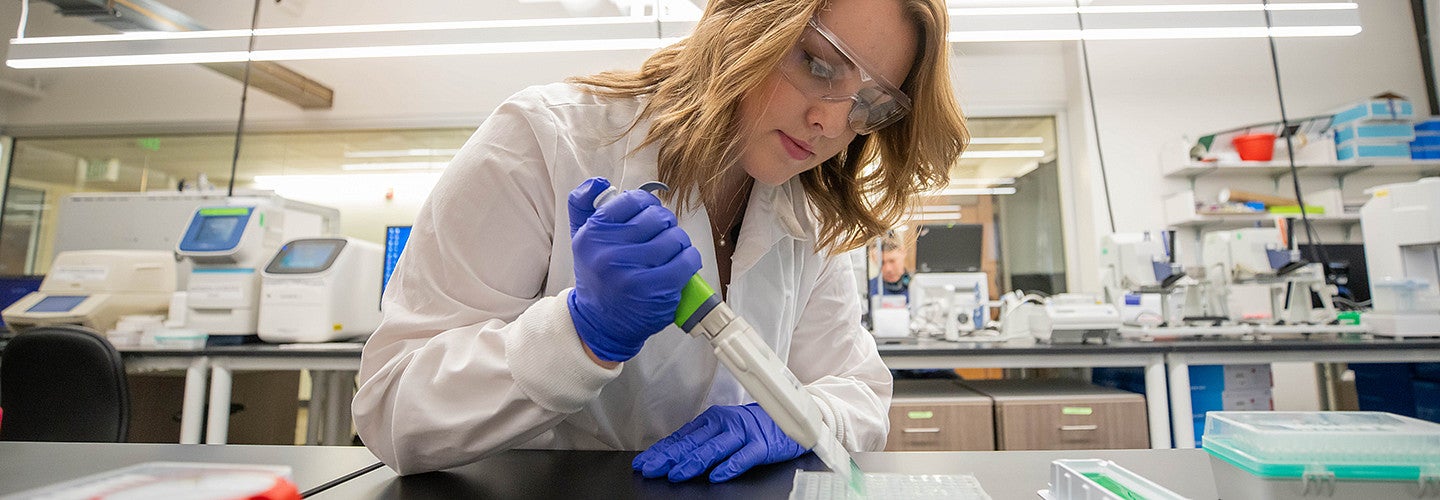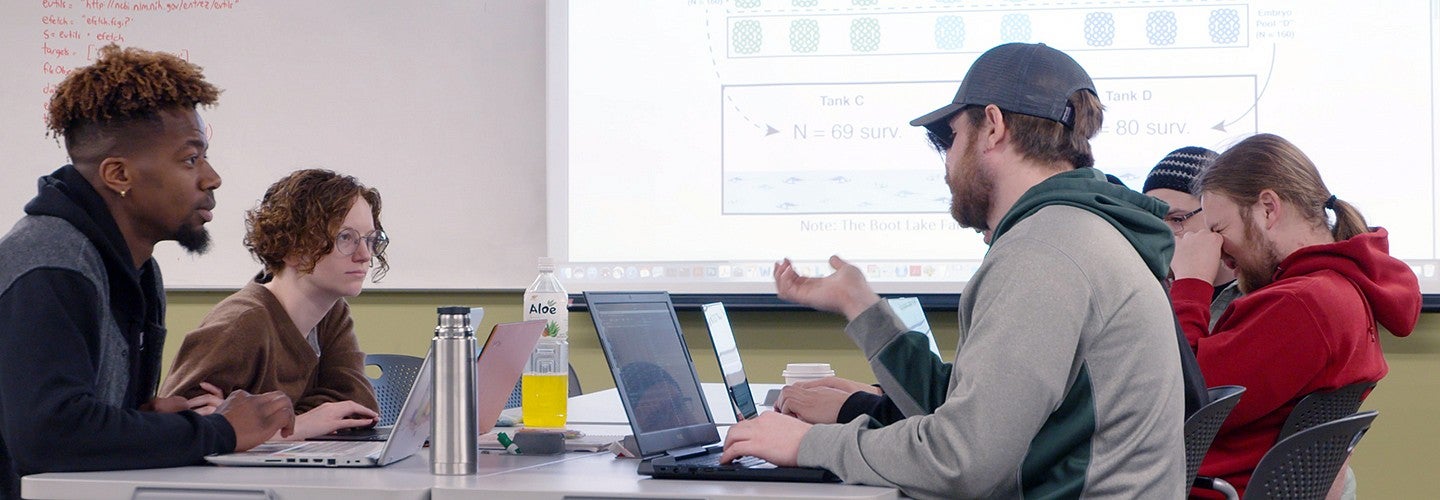
More Than Numbers
Students who complete a graduate internship work in a wide variety of roles in government, clinical, and academic labs, as well as research and development in industry. Alumni develop skills which have been successfully transferred to a wide variety of science, engineering, and analyst roles. A selection of roles is highlighted below. These example positions share core competencies: significant overlap of responsibilities between different roles is possible.

Common Job Titles for Bioinformatics Graduates
Students who complete the Bioinformatics Track work in a wide variety of data-centric roles in government, clinical, and academic labs; and in research and development in industry. Alumni from this track develop skills which have been successfully transferred to a wide variety of data science and analyst roles. A selection of roles is highlighted below. These example positions share core competencies: significant overlap of responsibilities between different roles is possible.
Bioinformatics Research Analyst, Bioinformatics Scientist, Programming Analyst: Create, modify, manage, and implement custom analysis pipelines. Communicate with multidisciplinary team to make inferences and visualizations of the data. Employ statistical analyses. Example: Develop custom single-cell RNA-sequencing analyses using a mixture of custom elements and established programs to answer biological questions. Questions can range from fundamental developmental biology (e.g. how are body plans created from a single cell?), evolutionary biology (e.g. why do some species have very different genome structures compared to their relatives?) translational (e.g. how different are cells from each other within a single tumor?).
Data Scientist, Research Data Specialist: Manage data, and design and build data structures that enable efficient storage, retrieval, and manipulation of data. Aggregate and deploy analysis on different data types. Example: Integrating omics and population meta data into a database and create a predictive model. Build a machine learning classifier to identify tumor vs non-tumor cells.
Bioinformatics Software Engineer, Software Test Engineer, Programming Analyst: Develop portable and reproducible software at a larger scale for bioinformatics or biological research. Create, modify, manage, and implement custom analysis pipelines tailored to the needs of the consumer, but do not deal extensively with questions underlying the biology. Create and optimize software for life science applications with customers in research on clinical diagnostics, or engineer software for biological instrumentation. Example: Write programs for sequence alignment, variant calling, or metabolomic data analysis. Develop software to analyze proprietary diagnostic assays. Write software for biological instrumentation (sequencer, cell imager, etc).
Meet Our Alumni
Take a look at the people we call our alumni and the different science paths they followed to reach the careers they have today.
Bioinformatics Alumni Publications
Take a look at the work our alumni have published over the years.
